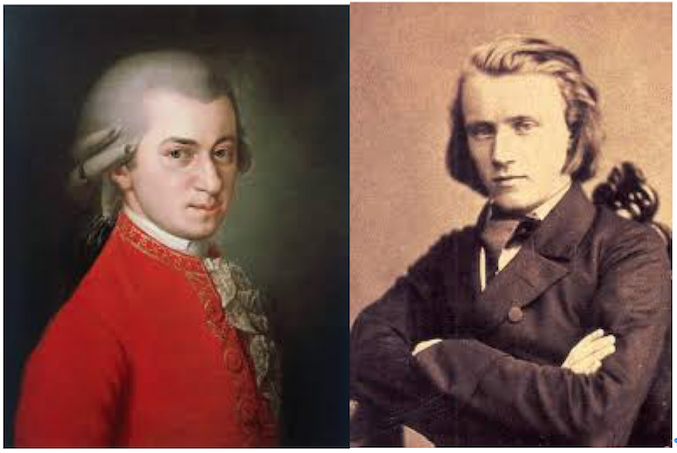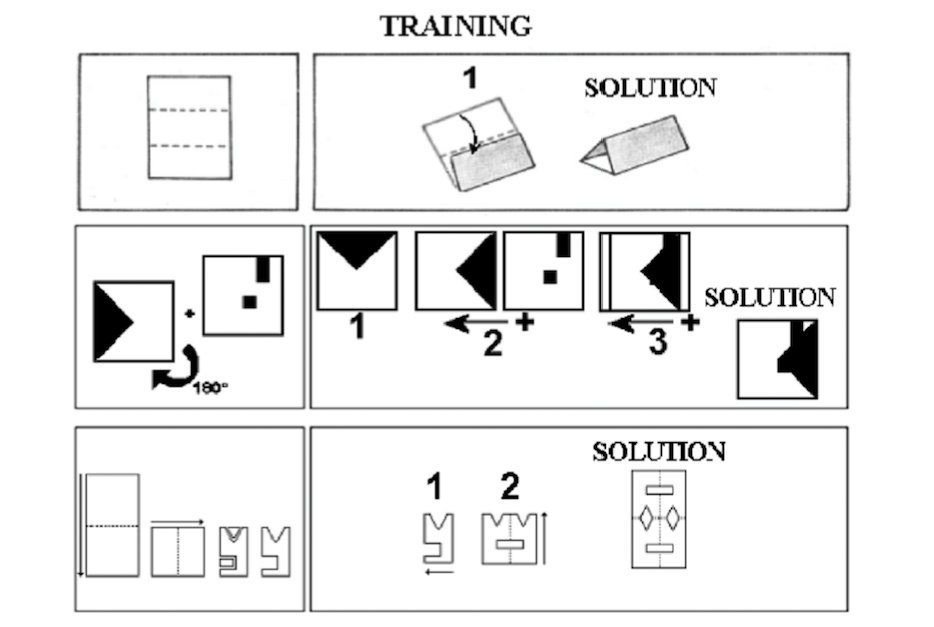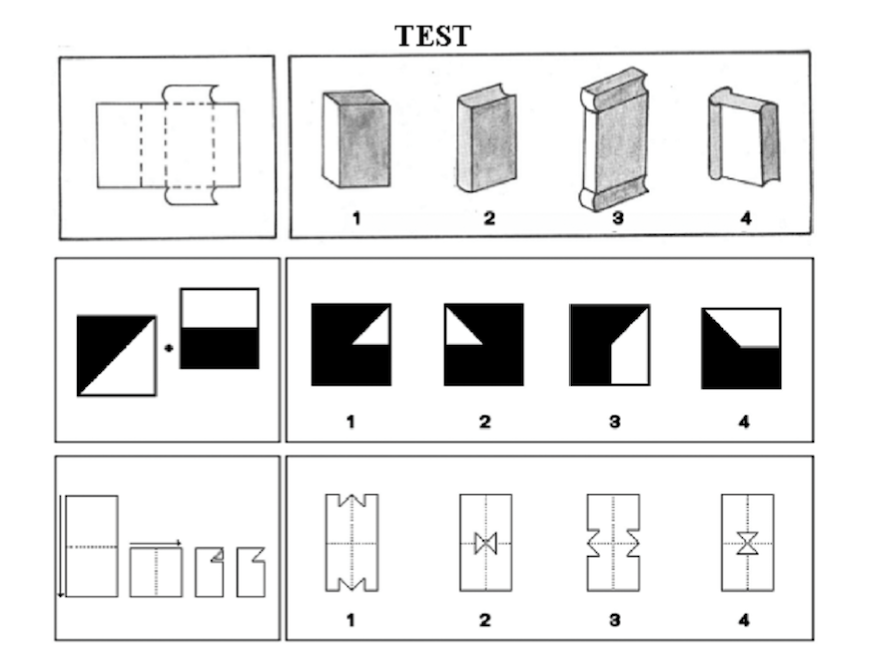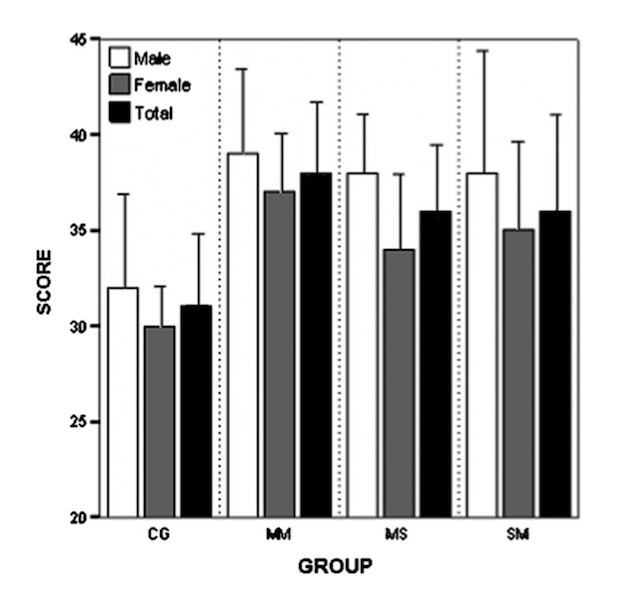Title of paper under discussion
The influence of Mozart’s music on brain activity in the process of learning
Authors
Norbert Jaušovec, Ksenija Jaušovec and Ivan Gerlič
Journal
Clinical Neurophysiology, Dec 2006: Volume 117, Issue 12, pp 2703-14
Link to paper (free access)
Overview

Listening to Mozart improves your ability to solve mental rotation puzzles, or so claimed a study by Frances Rauscher and colleagues in 1993. The 2006 study under discussion here – by Slovenian scientists – set out to explore this “Mozart effect” in more detail. Specifically, 1) does listening to Mozart help you in learning how to do these puzzles; and 2) is the “Mozart effect” due to mood/arousal – with Mozart’s music arousing the brain, readying it for puzzle-solving – or is it thanks to shared brain networks, with Mozart-listening priming the very brain networks also involved in rotation puzzle-solving.
In order to explore the effect of Mozart on learning, the first experiment in this Slovenian study saw participants presented with training in how to solve mental rotation puzzles before going on to test them; some (‘primed’) participants listened to Mozart just before their training, some (‘consolidated’) listened just after their training, and some (‘primed and consolidated’) both before and after. A further control group simply relaxed in silence before and after their training. After training was complete, all participants were then wired up to electroencephalogram (EEG) recording apparatus whilst being presented with a set of mental rotation tests.
Participants who had listened to Mozart before and/or after their training went on to perform better than the controls in their rotation tasks, and those who had been primed AND consolidated with Mozart exhibited EEG patterns associated with ‘high intelligent individuals’. No specific difference between ‘primed’ and ‘consolidated’ learning was found.
To investigate the second question – is the “Mozart effect” due to mood/arousal or the priming of cognitive networks – a second experiment was designed, with fresh participants. A repeat of the first experiment, but with some participants this time listening to a piece of Brahms known to be more ‘arousing’ than the piece of Mozart, it found no “Brahms effect”, a result suggesting that network-priming, not arousal, is behind the “Mozart effect”.
Experiment 1 – Method
56 psychology students were recruited into four separate groups, with each group given training on how to go about solving mental rotation tasks:

The first movement of Mozart’s Sonata for two pianos in D major, K448 (lasting 8 minutes) was played to three of the groups at certain stages surrounding their training: Group One listened to the Mozart immediately before training, then closed their eyes and relaxed for 8 minutes after training; Group Two closed their eyes and relaxed for 8 minutes before training and listened to the Mozart after training; Group Three listened to the Mozart before and after training. Group Four, the controls, closed their eyes and relaxed for 8 minutes before and after training.

The participants were then asked to solve 45 of the mental rotation puzzles, with with EEG apparatus monitoring their brain activity all the while. Two types of EEG activity were recorded: 1) ‘Event Related Synchronisation/Desynchronisation’ (ERS/ERD), a measure of the level of synchrony in the firing of brain cells in response to a task, with higher ERD signalling higher brain activity (and higher ERS a more ‘idling’ brain state, apparently exhibited by more intelligent individuals during problem-solving, perhaps signifying greater processing efficiency) and 2) ‘Approximate Entropy’ (ApEn), a measure of the ‘complexity’ of brain cell firing patterns – with less complex patterns during successful problem-solving supposedly being a sign of higher intelligence.
Experiment 1 – Results and discussion
In the spatial rotation test all three ‘Mozart-trained’ groups scored better marks than the ‘silence-trained’ control group. Though men outperformed women, the groups were sex-balanced so the group findings were sex-independent:

Only the group that had listened to Mozart before and after training showed more synchronised (higher ERS) and less complex (lower ApEn) EEG readings during problem-solving; such readings are typical of “high intelligence individuals”, leading to the suggestion that Mozart-listening had induced a brain state better able to solve the puzzles. Intriguingly the highest brain activity in this group was seen in the parietal-occipital area, a brain region known to “play a central role in […] spatial perception and imagery”.
Experiment 2 – Aim
In order to address the question of how come “music has an influence on brain functioning” – whether that influence is “1) as an artefact of preference, mood and arousal, or 2) as patterns of neural activation that facilitate cognitive functions” – Jaušovec and his colleagues repeated the ‘music-listening before and after training’ part of Experiment 1, but this time with one group listening to the Mozart and another to Brahms Hungarian Dance no 5, a piece that had been shown in a previous study to elicit a “more pleasant mood” in listeners than the Mozart, but which didn’t evoke the same EEG readings as the Mozart.
The scientists reasoned that if mood/arousal were responsible for the “Mozart effect” then a “Brahms effect” would be even more impressive – ‘Brahms-trained’ participants would outscore ‘Mozart-trained’ participants in the spatial rotation tests. But if, on the other hand, a priming of brain cell firings patterns is instead responsible for the “Mozart effect”, ‘Brahms-trained’ participants would not be expected to do any better than the controls in their tests.
Experiment 2 – Method
36 psychology students, none of whom had taken part in Experiment 1, were divided into three groups, each of which was presented with different soundtracks before and after training: Group One listened to the Mozart, Group Two to the Brahms and Group Three to silence.
After this training they proceeded, as in the first experiment, to take spatial rotation tests whilst fitted with EEG monitoring equipment.
Experiment 2 – Results and discussion
Only the Mozart group distinguished themselves at the spatial rotation tasks, outperforming the other two; the Brahms group did no better than the controls.
The Mozart group exhibited higher ERS readings across alpha and gamma (brain) waves, suggesting lower brain activity levels and hence a lower level of alertness/arousal. In contrast the Brahms group exhibited higher ERD readings, suggesting higher levels of brain activity, alertness and arousal.
Taken together these results suggest that arousal is not the factor behind the musical enhancement of spatial rotation puzzle-solving. Rather, that the act of listening to Mozart recruits regions of the brain that also happen to be involved in addressing spatial rotation tasks, regions that are thus inadvertently primed for such tasks as the Mozart is digested. In the words of the authors “Overall, the data suggest that the increased performance in spatio-temporal reasoning was a result of the activation of specific task-relevant brain areas, as well as the inhibition of task irrelevant brain areas, provoked by listening to Mozart’s sonata (K. 448)”.
Coda
Mozart Sonata for Piano Duo in D Major, K.448
Daniel Barenboim & Martha Argerich
Great post! I am a great believer in the Mozart effect. Great to see some facts.
Thanks for the comment Dorina, the Mozart effect has had a mixed press over the years, with some researchers finding it difficult to repeat the initial findings, but this paper at least found a strong effect in both its experiments.